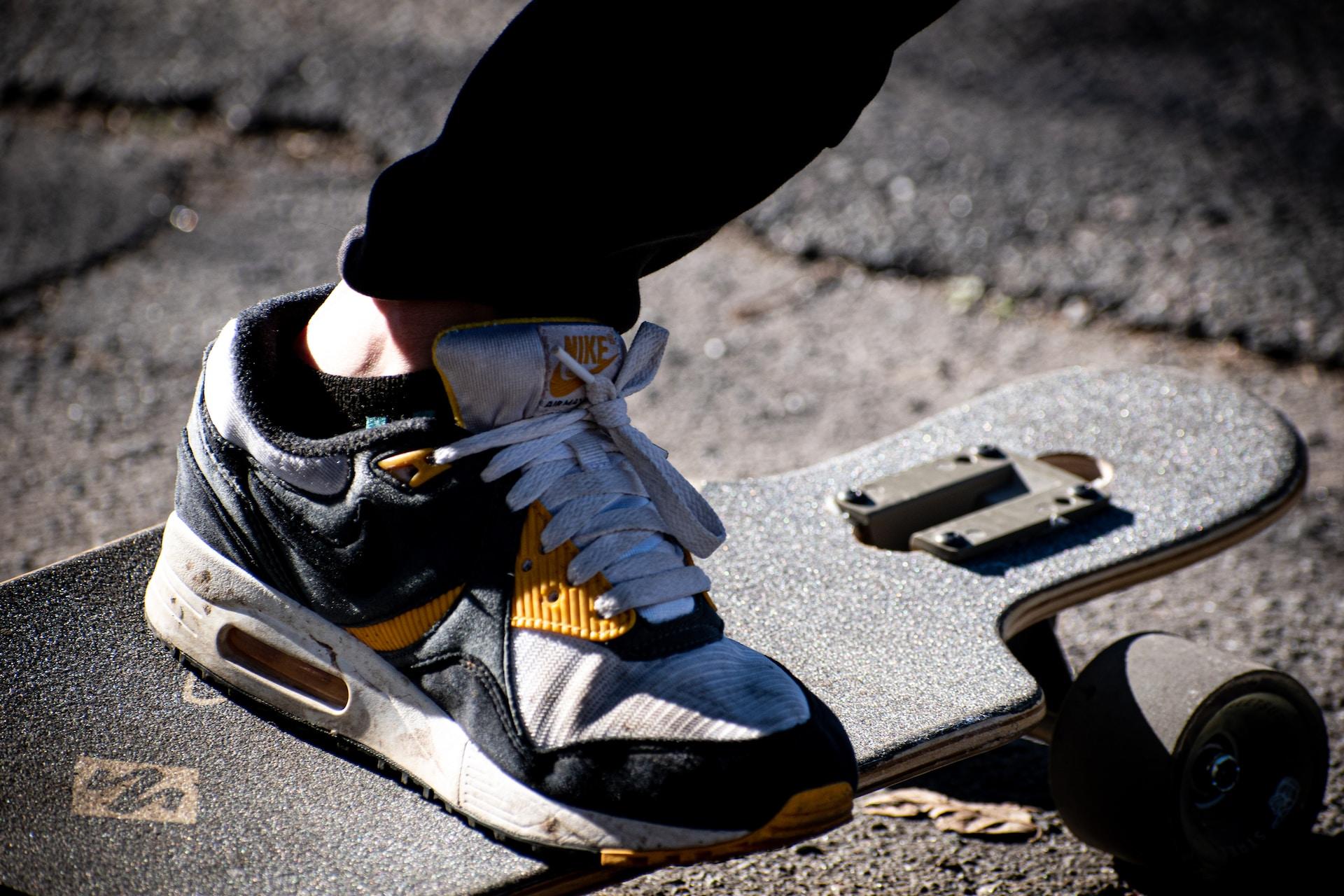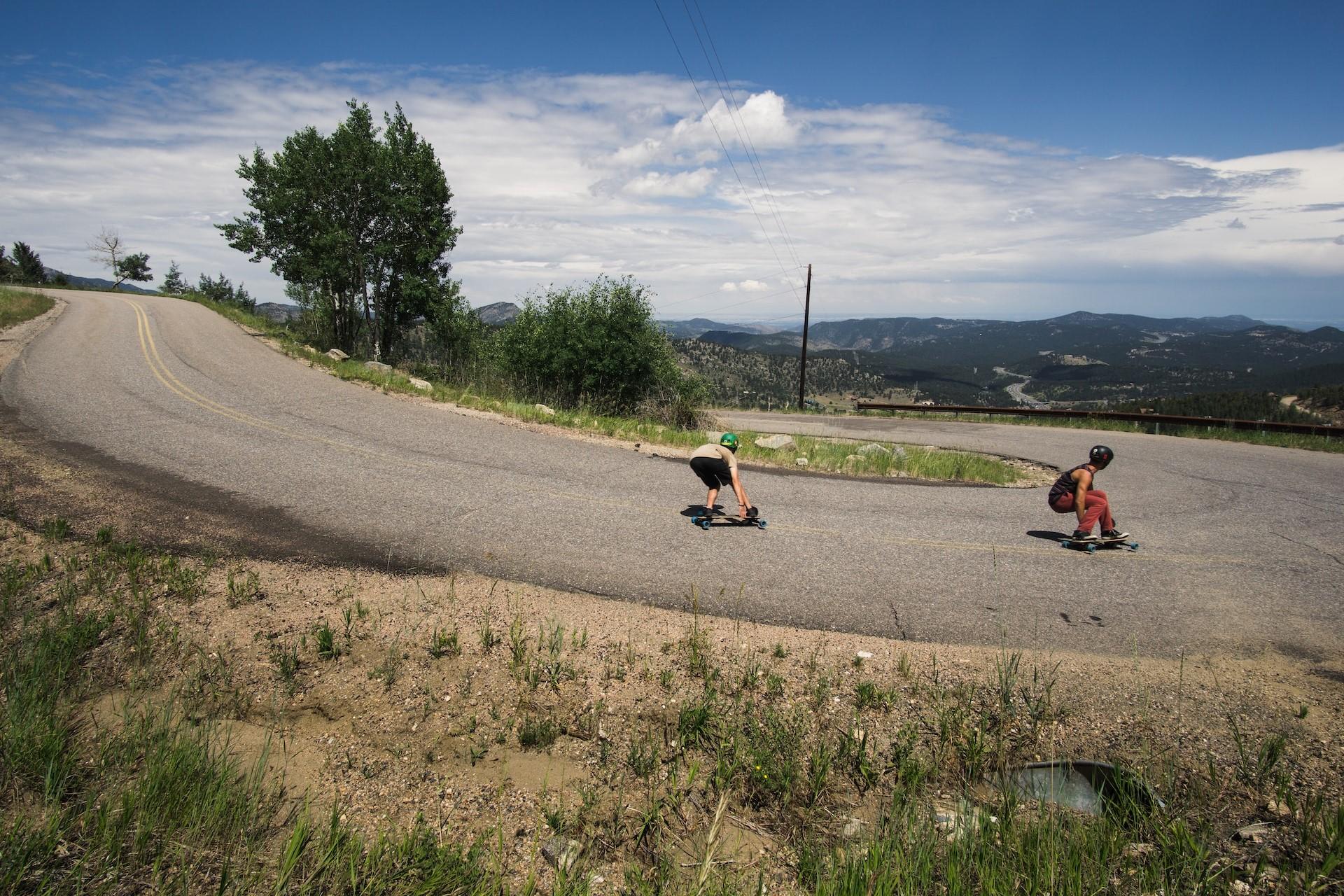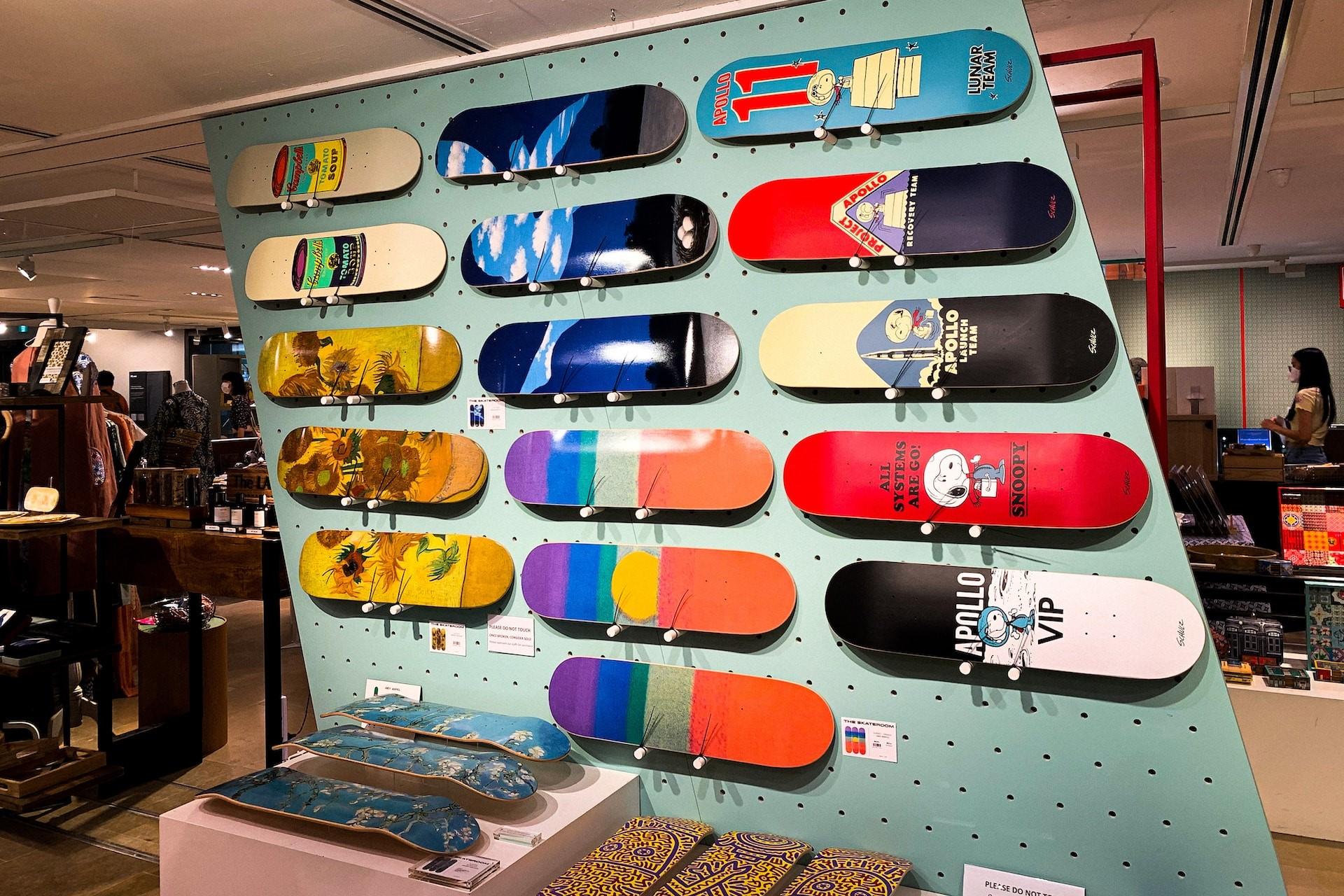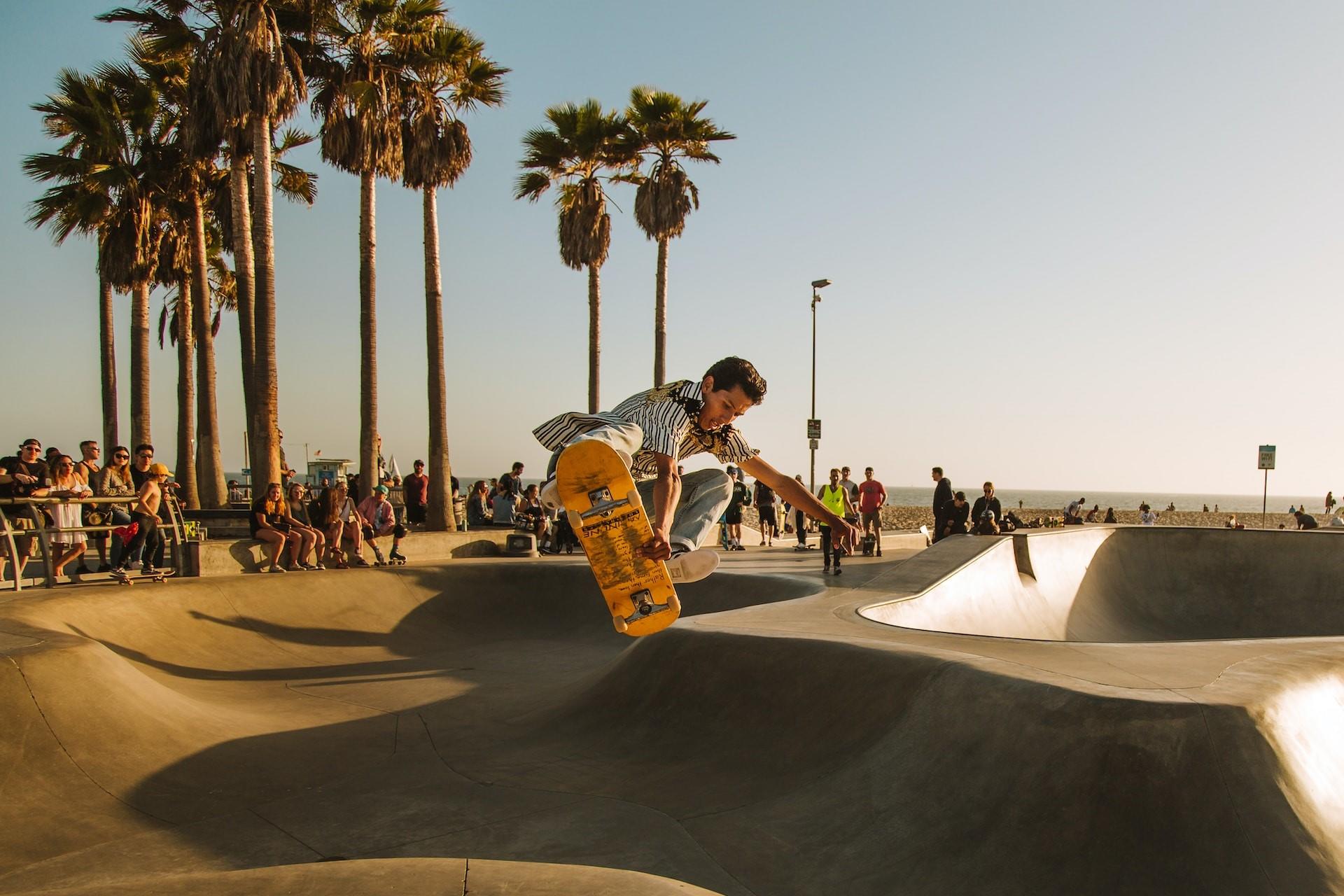Skateboarding and longboarding have a lot of things in common, but there are also lots of differences and while both involve riding on a board with wheels by standing on it, after that, the two seem to diverge. Let's have a look at what makes them different.

The Board
Given one is called a longboard and another a skateboard, it's fair to say that it's quite obvious that the boards used are different.
A longboard, as the name suggests, is longer than your typical skateboard and also wider. They're designed with stability and balance in mind, making them an excellent choice for simple transportation.
Longboards still come in lots of different shapes and sizes such as the pintail, drop-through, drop-down, double drop, cruiser, etc. We'll not go into all the differences here because that'd be the difference between different types of longboard and not the difference between longboarding and skateboarding.
Their length and width also make them popular choices for downhill racing, one of the more extreme uses of longboards.

Skateboards are shorter and narrower than longboards. Much like longboards, skateboards also come in several different shapes, with the standard symmetrical skateboard the most popular choice today.
Before the 1990s, though, skateboards weren't symmetrical lengthways and it was common to have just one kicktail at the back. If you're old enough, think of Bart Simpson's skateboard, which, just like The Simpsons, dates back to the 1980s.
Modern skateboards have a kicktail at either end to help with tricks and allow riders the option to switch the direction of the board with no noticeable differences.
The Wheels
Different boards require different wheels and the wheels you find on a longboard are larger and softer than those on a skateboard. Longboard wheels are like this because they provide a smoother ride when cruising or riding downhill.
Skateboard wheels are smaller and harder because it makes it easier to perform tricks and makes them more likely to slide on smooth surfaces, which skateboarders can use to control the board and do many different tricks.
Riding Style
You don't ride a skateboard the same way that you'd ride a longboard. Longboarding, in certain circumstances, is a more casual approach to riding than skateboarding.
Since longboards can be used for transportation, you can just sit back (metaphorically) and enjoy the ride on a longboard. It's common for longboarders to "carve" or make smooth turns, much like you'd see a skier or snowboarder do on powder and travel through scenic routes.

Skateboards, on the other hand, are far more dynamic and explosive in the way they're ridden. Skateboarders often do tricks, jumps, and grinds and use urban environments, skateparks, and anywhere they can find something that would be suitable for doing tricks.
That isn't to say that you can't do tricks on a longboard and some longboarders do, but this isn't as prevalent with longboarding as it is with skateboarding.

Terrain
Different boards and different ways to ride mean that longboards and skateboards aren't usually seen in the same places.
Longboards are designed for long stretches of road, bike paths, and hills. They're also designed for longer distances and higher speeds while remaining comfortable to ride at high speeds.
Skateboards tend to be used in streets, skateparks, and on urban furniture like benches, rails, and stairs, and while there are areas and types of terrain where both skateboards and longboards could be used, it isn't likely that both sets of riders would be doing the same thing with the space provided.
Community
Longboarders and skateboarders have similar passions for their boards, but they don't tend to be part of the same communities since they tend to go skating in different places with different people.
Longboarders are looking for either comfortably cruising on their longboards or the excitement of downhill racing.
The skateboarding community tends to favour self-expression, individuality, counterculture, and many of the things that come with it like certain kinds of fashion, street art, music, etc.
Both are subcultures and arguably somewhat related subcultures. In most cases, both communities are friendly and welcoming. Sometimes, however, the differences between the two communities can cause friction. This is by no means felt globally across the communities, but there are members of both communities who dislike the other for mostly trivial reasons.
Some skateboarders will dismiss longboarding as too easy or not even worthy of being uttered in the same sentence as skateboarding. While longboarding is easier at first, like any skill, to become very good at it will take a lot of practice. Said individuals also dislike the idea that longboarders call what they do “skating” or “skateboarding” because they disagree on the exact definition.

There's also the idea that when the two groups find themselves in the same skatepark, the longboarders don't know how to follow the unwritten rules of the skatepark, but this is almost always anecdotal and the very things that annoy said skateboarders about longboarders are the same kinds of criticisms levelled at inexperienced skateboarders unfamiliar with the etiquette of skateparks.
In every community, there'll be elitists, gatekeepers, and those who dislike things that are different from what they like. It's much easier to find reasons why skateboarders hate longboarders than the reverse, but that's likely because skateboarding is far more popular than longboarding.
Even within skateboarding, some dismissed street skateboarding and firmly held the belief that only vert and pool skateboarding was a valid form of skateboarding. Let's just say that any community will disagree, even with itself, and skateboarding and longboarding communities are no different.
On the whole, however, we can't stress enough how both communities are generally very welcoming, enjoy what they do, and aren't really bothered by how other people spend their free time.
How to Get Involved with Longboarding
If you want to take up longboarding, start by doing some research. Watch videos and read articles on longboarding so that you have a better idea of what you'll be getting yourself into.
You can also start looking for the kind of equipment that you'll need to get started. With any new hobby or activity, we recommend investing appropriately to your level. While it can be quite exciting to buy fancy and expensive equipment, it won't necessarily make you any better at longboarding so consider entry-level equipment that you can upgrade or replace at a later date when your level has improved.
We also need to stress safety and while for more extreme sports, safety isn't sometimes seen as cool, beginners will spend more time than they'd like on the ground following a fall. Even at slow speeds, falls can be dangerous and safety equipment can make the difference between being able to get back up and try again or having to slump back home to recover for a few days or weeks.
Knowing that you're somewhat protected thanks to your equipment can also help people become less scared of skateboarding so it's a good investment, especially for beginners.
With longboarding, you can search online for communities, find out where they practice, what they do, and ask them for advice on what you should be doing to get better.
Make sure that you only practice in places where it's legal to do so. The last thing you want is to be fined or arrested for practicing longboarding so make sure you're on top of local laws and regulations before you start, too.

How to Get Involved with Skateboarding
Getting involved with skateboarding is very similar to getting started with longboarding. Do your research, get your entry-level equipment and gear, and find a suitable and legal place where you can practice.
Depending on where you live, it might actually be easier to start skateboarding because you can skateboard in much smaller areas or go to skateparks. Longboarders can also go to skateparks, but the nature of their boards makes them better suited to longer stretches of roads, bike paths, and hills.
Safety is just as important for skateboarding so don't overlook it. It's a good idea to speak to staff members in skate shops about what kind of equipment you should get, but a helmet, knee and elbow pads, and wrist guards are generally recommended for beginners.
Whether you want to start skateboarding or longboarding, it can also help to be taught how to do it rather than learning to skateboard on your own. There are plenty of private instructors and coaches and learning from them could be a way to get much better much more quickly than just learning through trial and error.
Many of the tutors and instructors on Superprof offer their first lessons for free so you can try a few out and maybe even compare a free skateboarding session to a free longboarding session to see which of the two you'd prefer.
Once you've picked your ideal instructor, you can start getting out there, practising tricks, and enjoying the time you spend with your board, no matter what size it ends up being.















